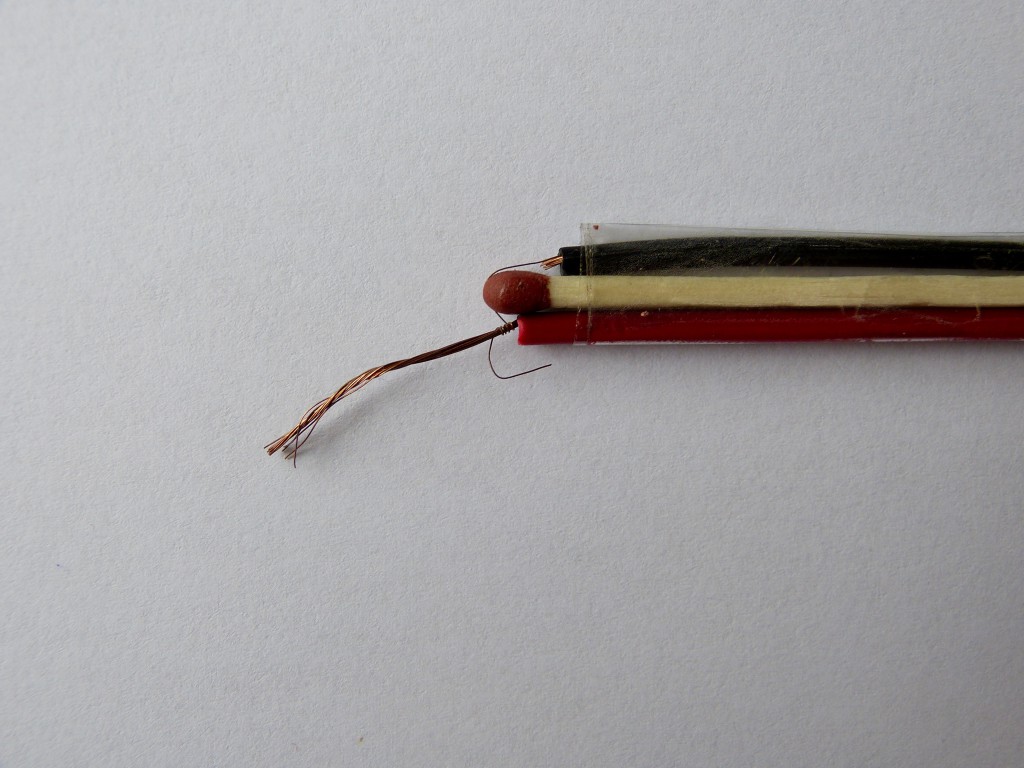My sons are a week off from school and since it was rainy we decided to make an igniter for fireworks or model rockets. The type of igniter that we made comes from Grant Thompson “The King of Random”. He entertains a YouTube channel with lots of great experiments with simple materials. The igniter is easy using only some stranded copper wire, matches and tape. The stranded wire is stripped and a single copper strand is connected to the another wire. A match is then placed between the two wires and the single copper strand is then fixed against this head. A notch made in the head of the match keeps the strand in its place. Tape is used to fixate all the parts. The cool part of this project is that you can remotely ignite the match.
We used both two 9V alkaline block batteries in parallel (as suggested by Grant Thompson) and a 6V battery that I salvaged from an old pump. Both solutions work perfectly although with the 9V block batteries the match ignited faster. I used two alligator clips to connect the igniter to the battery. I placed the igniter is a third hand to prevent that it sets something on fire by accident.
A word of caution. The 6V battery that we used is of the sealed lead acid type. Since you will short circuit the battery it is safer to use a alkaline battery instead of rechargeable battery (lead acid, Li-ion, NimH etc). Rechargeable batteries can explode or catch fire when short circuiting it. Since I short circuited my lead acid battery no longer than a few seconds I figured that there was no danger. In conclusion it is safer to use the alkaline batteries and short circuit them only for a few seconds in a row.
So how is it possible that the match catches fire. I already mentioned that you short circuit the battery. According to Ohm’s law I = V / R. The resistance R is very low (it’s just the copper strand) while the voltage V remains the same. The current is therefore very high. The heat produced in the circuit is proportional to I2 * R * t. With the current squared the heat rapidly increased with increasing current (even though the resistance is low). At a certain point the heat ignites the head of the match.


